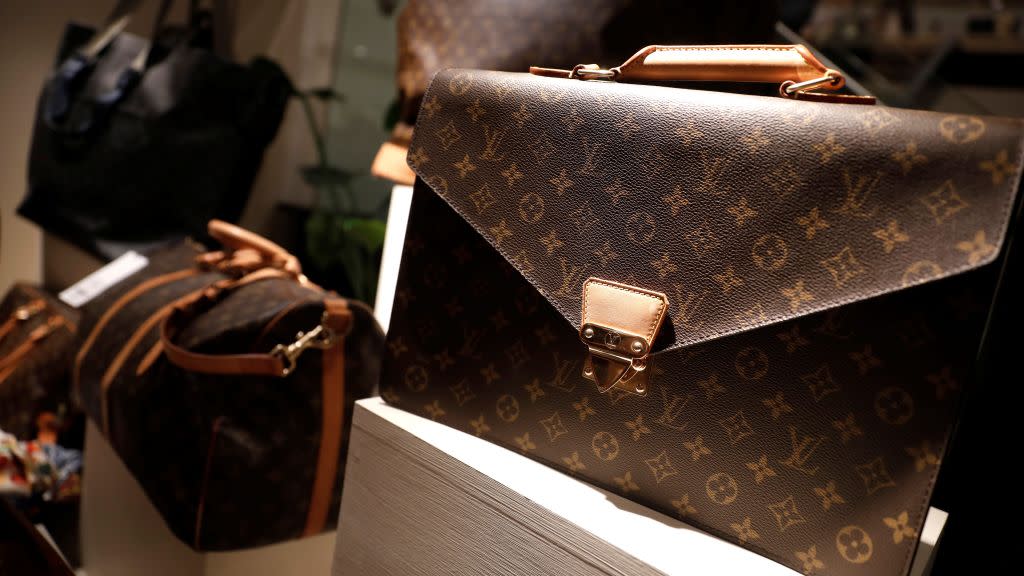These fashion businesses are positioned to survive a US recession

Is the US headed toward a recession? It depends on who you ask. But there are enough warning signs that many economists think a recession is likely by 2021—bad news for America’s already-ailing retailers.
In the first half of this year, bankruptcies and store closures continued to climb, and that trend is expected to continue. Many of the struggling companies are clothing sellers, who are likely to see sales dry up even more if shoppers cut spending or change their shopping habits in a downturn.
Some fashion businesses, however, are in a good position to endure a rough patch. They might even seize it as an opportunity.
Go high and low
“For many very high-end luxury brands, they could weather the storm quite well,” says Sarah Willersdorf, head of Boston Consulting Group’s fashion, luxury, and beauty practice. Off-price retailers might end up gaining some market share, she adds, and fashion resale companies, which are enjoying a good deal of success at the moment, could see their sales pick up too.
In other words, businesses selling very expensive fashion and those selling value-driven items are likely to do best. Those that focus on the middle, which are already under pressure, could be hit hardest.
Willersdorf points out that in the Great Recession of 2007 to 2009, the wealthiest 5% to 10% of Americans actually saw their share of the country’s wealth increase. Luxury businesses such as Hermès and LVMH that cater to ultra-wealthy shoppers flourished amid a “flight to quality,” as one analyst put it, while those luxury retailers that did suffer tended to recover quickly. In a new recession, those types of companies could come out strongly again if they maintain a focus on their top customers.
At the same time, a common behavior among less affluent shoppers in a recession is to forgo some discretionary purchases and hold out for items that are really special—the sort they tend to seek at luxury labels. What happens, Willersdorf says, is that “you see the middle from a price-point perspective getting squeezed.”
Squeezing from the other side, of course, are businesses that appeal to bargain hunters. As shoppers try to stretch their dollars further in a weak economy, off-price stores, outlets, and “recommerce” companies that sell pre-owned clothing could steal market share. During the Great Recession, chains such as TJ Maxx and Ross outperformed the retail industry as a whole. Analysts believe the period even contributed to the discount addiction shoppers have displayed in the years since, which continues to fuel those businesses.
Benefits to bargain businesses
Lower prices aren’t the only reason these value-focused companies could grow. In an interview with investment firm Cowen, Julie Wainwright, CEO of luxury consignment site The RealReal, said that in a recession, “We actually believe that we’re going to get more product in.”
The RealReal and companies like it could see more people selling items from their closets to bring in extra cash, which would have some knock-on effects. More inventory could also mean better inventory, while the increased supply would drive prices down. Both factors could potentially attract more bargain hunters, including people who previously didn’t shop resale.
In a research note, Cowen also pointed out that people consigning with The RealReal might shift some of their spending from new purchases to secondhand items. It’s a point Wainwright echoed in her interview. “Right now, when people sell things, they go out and tend to buy new,” she said. “We may get more of our consigners buying from us. We may become a primary source for them.”
Off-price stores would likely see a similar improvement in their inventory, albeit for different reasons. In this case, brands and retailers that sell new goods could find themselves with excess merchandise as shoppers rein in their spending. If these companies have outlet channels, they might send the goods there. But many also sell them to off-price businesses.
Off-price retailers also get some extra leverage during tough times, because they give brands and retailers a way to mitigate losses. They use that bargaining power to get better deals and better merchandise. “Often you’ll see they get access to brands they didn’t have access to,” Willersdorf says.
What companies can do to succeed
Whether or not a recession is imminent, many companies are already preparing. In Boston Consulting Group surveys, CEOs rank a recession as a top concern.
Willersdorf says there are steps clothing sellers can take to get ready and power through if the US economy does contract. Those include making sure they have adequate cash on hand for a downturn, and cutting costs. They should also look for opportunities to renegotiate real-estate and manufacturing deals to get better terms. Not least of all, they need to continue focusing on serving their best customers.
“And then if a slowdown comes, use the period to be really creative,” she says. “Try to test and learn and continue to innovate.”
Brands don’t thrive by hunkering down and waiting. In fact, an analysis by accounting and consulting firm Deloitte found that, during the last recession, structural changes in retail actually accelerated. The brands that emerged from it strongest were the ones that had high reinvestment rates and positioned themselves for the future. (It helped if they didn’t have a high debt load, which created cash-flow problems and made less available for investments.)
It’s inevitable that many companies would suffer. But there could be winners, too, coming out with more customers and more opportunities for the years ahead.
Sign up for the Quartz Daily Brief, our free daily newsletter with the world’s most important and interesting news.
More stories from Quartz:

